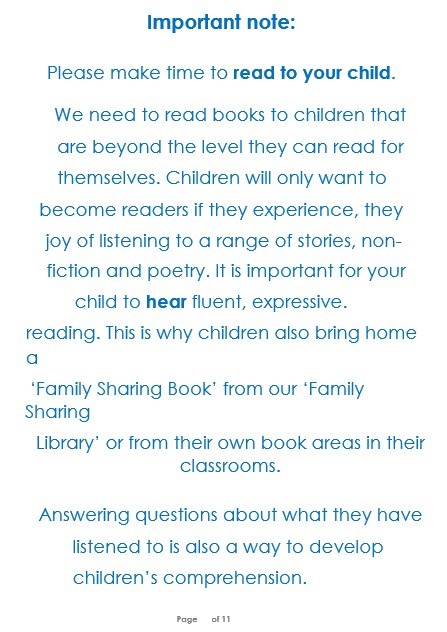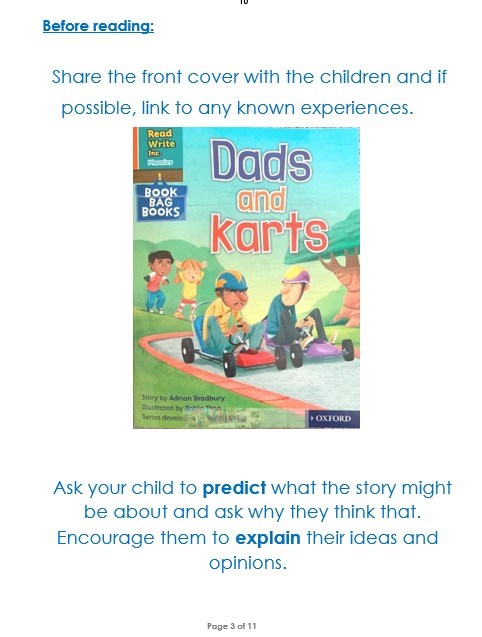The writing learning journey at St Philip's is planned carefully using 'The Write Stuff' to ensure that writing skills are embedded and developed in a range of genres and for a variety of purposes. The Write Stuff is based on two guiding principles; teaching sequences that slide between experience days and sentence stacking lessons. With modelling at the heart of them, the sentence stacking lessons are broken into bite-sized chunks and taught under the structural framework of The Writing Rainbow. Teachers prepare children for writing by modelling the ideas, grammar or techniques of writing.
The children are also provided with opportunities to plan, draft, write, edit and improve their writing.
Throughout the week in school, basic skills lessons are also taught with a focus on handwriting, spelling and grammar.
Class writing ladders provide a progression model and assessment tool to ensure that core writing skills are embedded and built upon in each class.
To begin our children's journey, it begins with Phonics. As a Read, Write Inc school we discretely teach all 44 phonemes by the end of Key Stage 1. To enable all children to be become self-regulated readers by the end of Year 6 reading lessons are designed around VIPERS progression in Reading. Introduced in Reception, these skills are revisited and progressive in each year group to the point of automaticity.
Spelling is taught from an early age within phonics lessons, through Read, Write Inc, based on the phonemes focussed on. National Curriculum spelling expectations are taught in each year group in basic skills sessions.
Punctuation and Grammar is embedded through our writing model whereby children are taught the National Curriculum requirements in context. Alongside this, teachers teach explicit lessons in basic skills sessions to ensure children's knowledge of National Curriculum requirements is fully understood and becomes second nature.
Planning the English Curriculum
Read more about our teaching of English:
English Curriculum
Spelling
Read, Write Inc - Our Phonics Scheme
The government strongly recommend the use of synthetic phonics when teaching early literacy skills to children. Synthetic phonics is simply the ability to convert a letter or letter group into sounds that are then blended together into a word.
Here at the St Philips Catholic Primary School, we are using the Read Write Inc (RWI) programme to get children off to a flying start with their literacy. RWI is a method of learning based upon letter sounds and phonics, and we use it to aid children in their reading and writing.
Reading opens the door to learning. A child who reads a lot will become a good reader. A good reader will be able to read more challenging material. A child who can read more challenging material is a child who will learn. The more a child learns, the more he or she will want to find out.
Using RWI, the children learn to read effortlessly so they can put all their energy into comprehending what they read. It also allows them to spell effortlessly so they can put all their energy into composing what they write.
The children are assessed regularly and grouped according to their ability. They will work with a RWI trained teacher or teaching assistant. In addition to the RWI, children will also be working on writing skills in their classes with their own teacher.
The Read Write Inc Manager at the St Philips Catholic Primary School is Mrs Underhill. If you have any questions or need any guidance on the programme, please pop into the school office or give them a call and they will arrange an appointment for you.
When using RWI to read the children will:
When using RWI to write the children will:
When using RWI the children will also work in pairs:
Help your child learn to read words by sounding-blending (Fred talk) eg. c-a-t = cat, sh-o-p = shop. Children learn to read words by blending the letter-sounds that are in the Speed Sounds set (shown further down the page).
Help your child to say the pure sounds ('m' not 'muh', 's' not 'suh' etc.) as quickly as they can, and then blend the sounds together to say the whole word.
Support your child at home using the following guide:
Children in Reception who are learning the first 44 letter sounds and are not blending fluently will bring home sound sheets, picture books and a library book for you to read with them.
Once children can blend fluently and know the first 44 sounds they will bring home Ditty sheets or a red Ditty book, an Oxford Reading Tree or Storyworld book and a library book.
Children on Green level to Orange level will bring home a RWI book, an Oxford Reading Tree or Treetop book and a library book; these will be changed every 3/4 days.
Children on Yellow level to Grey level will also bring home a RWI book, an Oxford Reading Tree or Treetop book and a library book. As these books are lengthier, these will be changed once a week.
Read Write Inc Books: (This is your child's main reading book) Please encourage your child to read though the speed sounds page first, then the green and red words page and then check your child understands the meaning of words on the vocabulary check page, before they start reading the book. Your child will have read this book at least three times before they bring it home. They should be able to read this book with fluency and expression by the time they bring it home and they should have a good comprehension of what the book is about. At the back of the book are find it/prove it questions for you to do with your child.
Oxford Tree/Treetops Books: (These books are to support is your child's main reading book) These books are to extend your child's reading. Your child should be able to read most of this book however they might need a little support, especially with the first read.
Visit the Oxford Owl website (external link) which has has over 100 free ebooks for to enjoy with your child.
What else can I do to help my child learn to read?
Purchasing your own set of RWI sound cards will enable your child to practise the sounds he or she has already learnt and will be most beneficial. Please refrain from teaching new sounds until they have been taught at school. You can obtain them and other resources such as the Parent Handbook from Amazon.
Reading a variety of books (fiction, non-fiction, rhymes etc.) Discuss the different features of the books. Talk about the books and other reading materials that you have shared. Explain the meaning of new words. See if your child could change a part of the story to make a new version. You could use puppets or soft toys to retell the story. Most importantly though, show that fun can be gained by listening to stories and reading a range of texts, eg. cereal packets, shopping lists, road signs, web pages, magazines, comics, newspapers etc.
Finally, don't worry if your child is struggling at first with their sounds and words, they will get there in their own time. If you have time (we know it is very precious!), we would urge you to try and read stories to your child before they go to bed. This will help develop a wider vocabulary which makes a vast difference to their quality of writing but it will also encourage them to enjoy a good story.











Parent video: How to say the sounds
DAILY PHONICS PRACTICE Read Write Inc Phonics Set 1 The Shed School
DAILY PHONICS PRACTICE Read Write Inc Phonics Set 2 The Shed School
DAILY PHONICS PRACTICE Read Write Inc Phonics Set 3 The Shed School